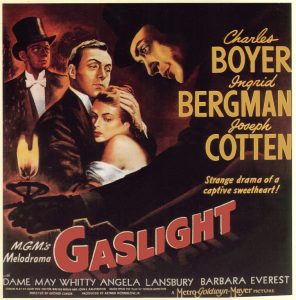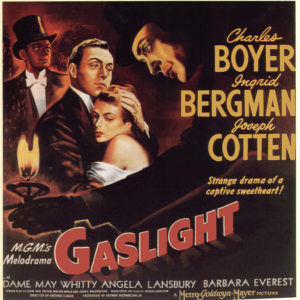Gaslighting
Abusive relationships do not always come with a black eye. Emotional abuse, while often less obvious, can have an equally damaging impact.
One such method of emotional abuse is called Gaslighting. Gaslighting is a term that came from a 1938 British play, Gas Light, in which a woman virtually watches her own sanity crumble after her husband uses deception and manipulation to play mind games for his benefit.

The idea behind gaslighting is to make the victim doubt their own sanity. In the play, the husband goes around dimming the (gas) lights, while assuring the wife that they haven’t been lowered and that she’s imagining things. In every day life, an person engaging in gaslighting may call their victim names, only to deny having done it. They may fail to inform the victim of an important event coming up in order to gain the upper hand when the victim unknowingly doesn’t show up to the event. They may lie, leave facts out, and use aggressive tones, only to deny. The idea is to build a foundation of insecurity.
The gaslighter feeds off of the guilt and confusion the victim feels. The gaslighter’s sense of accomplishment directly relates to how apologetic and dependent their victim feels. The gaslighter’s ultimate goal is to foster the victim’s dependency by crushing their own perception and self esteem.
Gaslighting is a real form of abuse, and it can be severely damaging. The disorientation the victim feels from questioning the validity of their experience is mind altering.
Learn more about the signs of gaslighting to help yourself or someone you care about.

